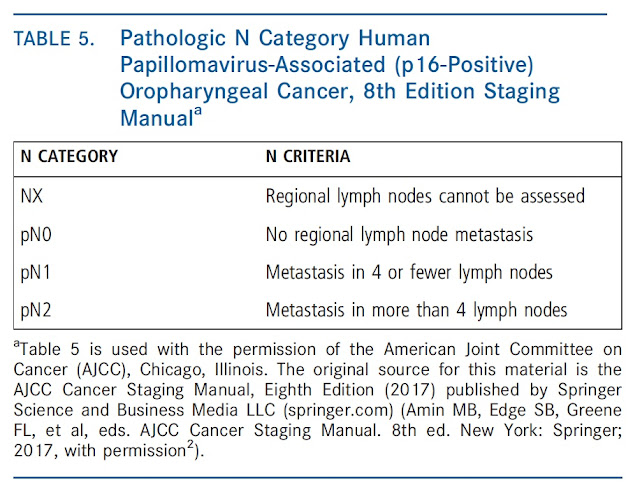 When a patient is informed that they have cancer, one of the very first question they ask is "What stage cancer do I have?" Even if the patient does not fully understand what staging actually means, most will understand that the worse the stage, the worse the survival outcome (stage 1 being the best and stage 4 being the worst).
When a patient is informed that they have cancer, one of the very first question they ask is "What stage cancer do I have?" Even if the patient does not fully understand what staging actually means, most will understand that the worse the stage, the worse the survival outcome (stage 1 being the best and stage 4 being the worst).
So how does a physician come up with the cancer stage for cancers of the mouth and throat? It actually does not involve a complicated algorithm in order to determine the stage of cancer. Rather, it is characterized by something called the TNM classification which is fairly straightforward. A similar classification system is used with other cancers located elsewhere in the body.
Broken down as simply as possible,
• "T" basically stands for primary Tumor size. The size cut-offs are 2 and 4 cm.
• "N" stands for lymph Node status. The size cut-off is 6 cm. Additional characteristics include how many, and whether it is present on just one or both sides of the neck.
• "M" stands for whether Metastases are present. Metastases is whether cancer has spread elsewhere in the body or not. It either is present (score of 1) or not (score of 0).
Once the TNM classification has been figured out, it can be converted to a "Stage" using tables shown at the very bottom. Please note that if metastases are present, the cancer will automatically be considered a stage 4.
So for example, a 1.5cm tongue cancer with a single lymph node less than 6cm in size located on the same side as the tongue cancer without any evidence for metastases would be classified as a T1N1M0 tongue cancer. T1N1M0 would be a stage 1 cancer.
For greater detail in how TNM classification is performed, check out the charts below which are what physicians actually use to classify all head and neck cancers. The charts below are taken from the American Cancer Society, 8th edition of the American Joint Committee on Cancer (AJCC) Staging Manual, Head and Neck Section. You can read ALL about it here in much greater detail.
So now you know!
Determining the "T": Please note that there are several different tables based on p16 status (whether HPV is present or not) as well as location of the cancer (throat or mouth).
"Staging" of the cancer after TNM scoring has been performed.
Once the TNM classification has been figured out, it can be converted to a "Stage" using tables shown at the very bottom. Please note that if metastases are present, the cancer will automatically be considered a stage 4.
So for example, a 1.5cm tongue cancer with a single lymph node less than 6cm in size located on the same side as the tongue cancer without any evidence for metastases would be classified as a T1N1M0 tongue cancer. T1N1M0 would be a stage 1 cancer.
For greater detail in how TNM classification is performed, check out the charts below which are what physicians actually use to classify all head and neck cancers. The charts below are taken from the American Cancer Society, 8th edition of the American Joint Committee on Cancer (AJCC) Staging Manual, Head and Neck Section. You can read ALL about it here in much greater detail.
So now you know!
Determining the "T": Please note that there are several different tables based on p16 status (whether HPV is present or not) as well as location of the cancer (throat or mouth).
Determining the "N": As with "T" status, please note that there are several different tables based on p16 status (whether HPV is present or not) as well as location of the cancer (throat or mouth).














No comments:
CLICK to Post a Comment